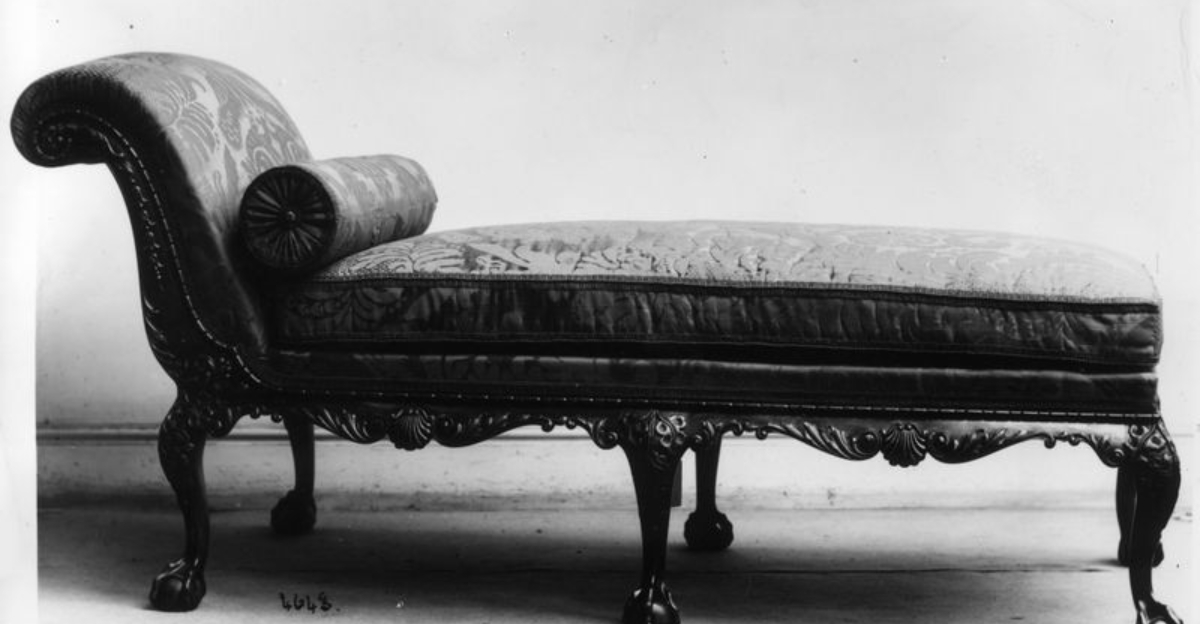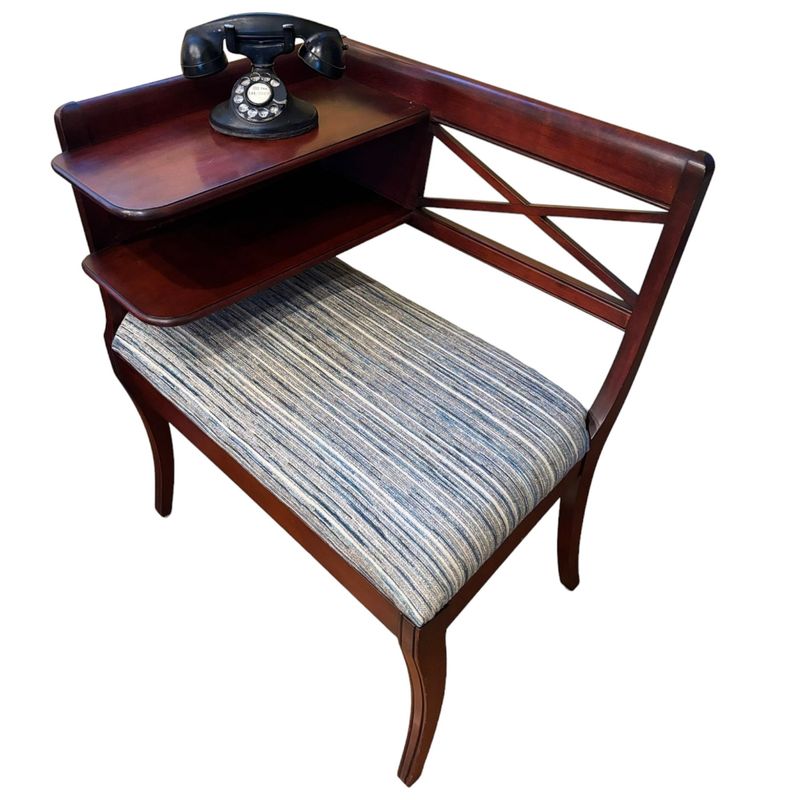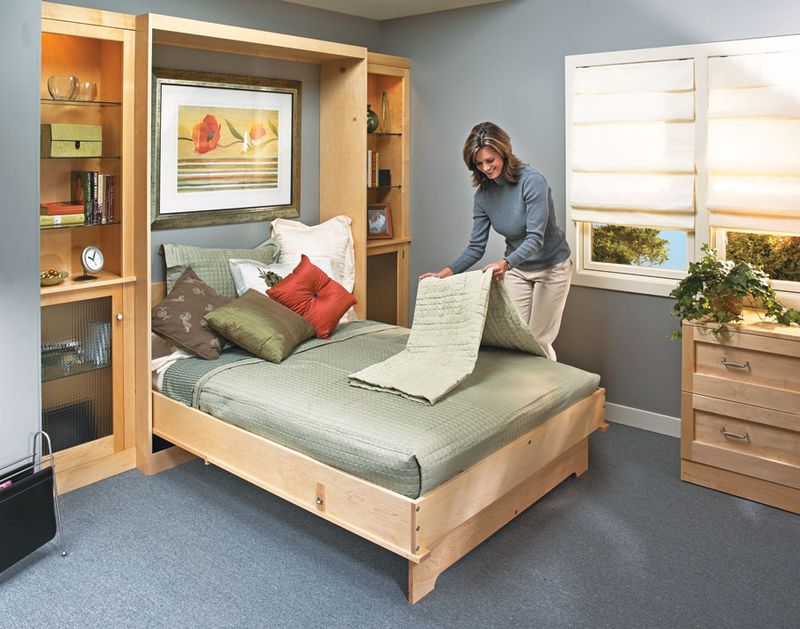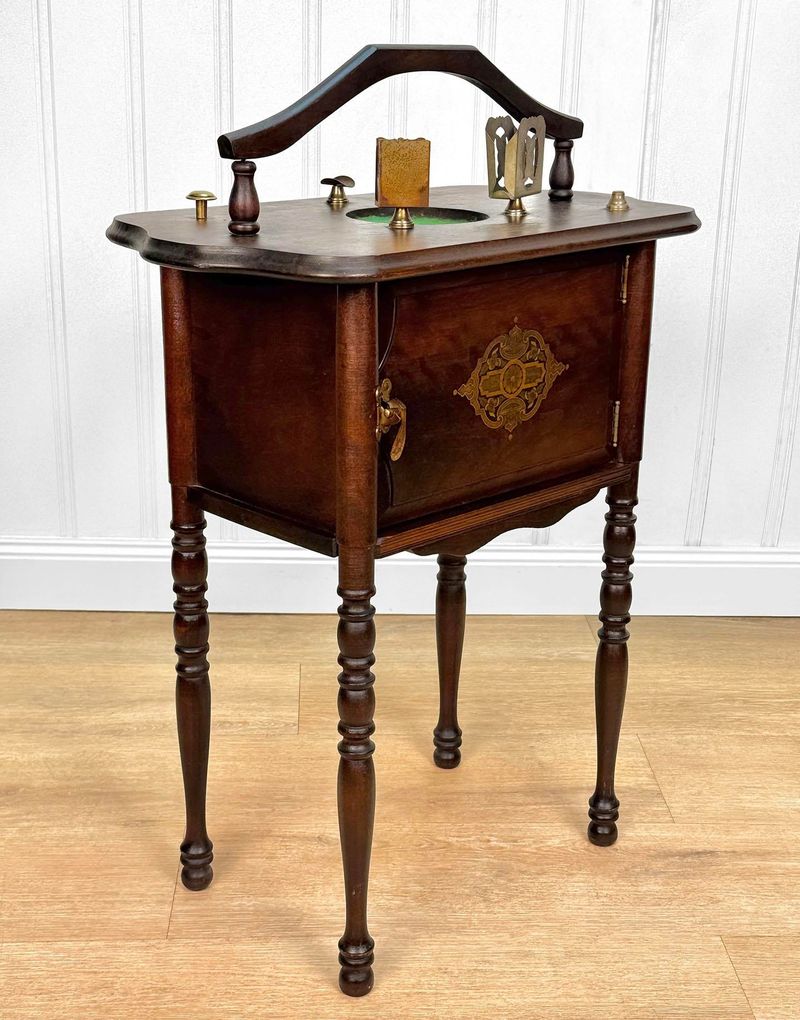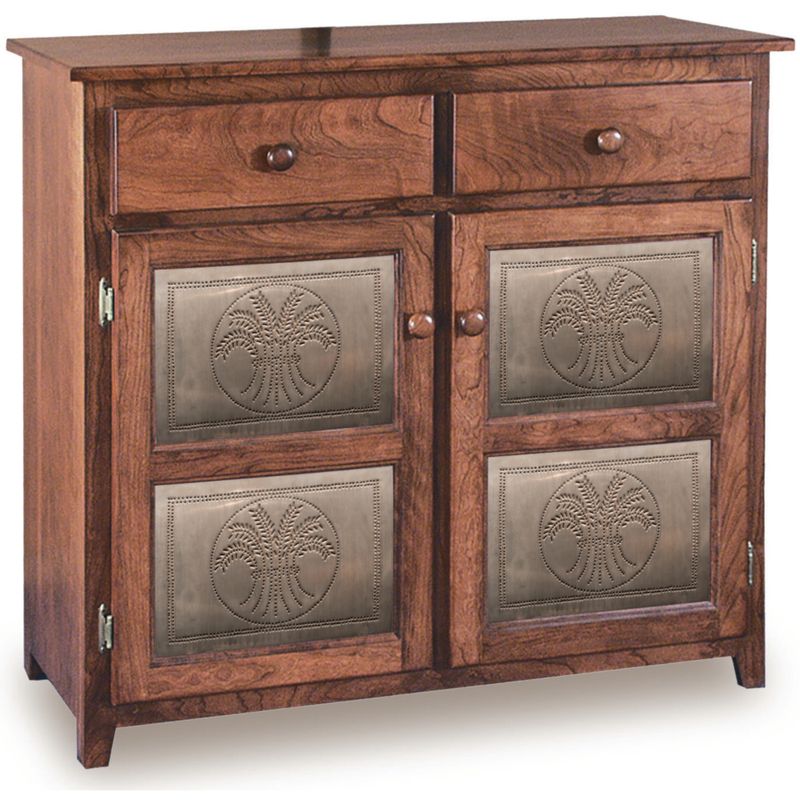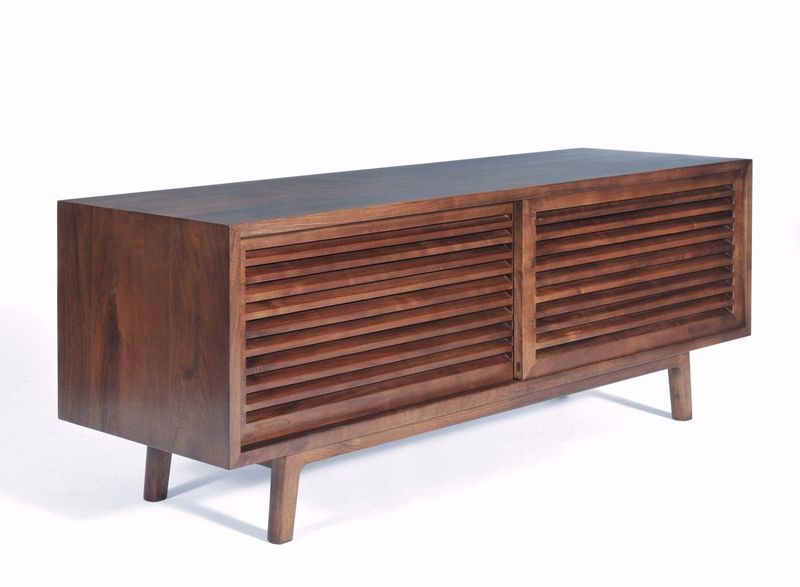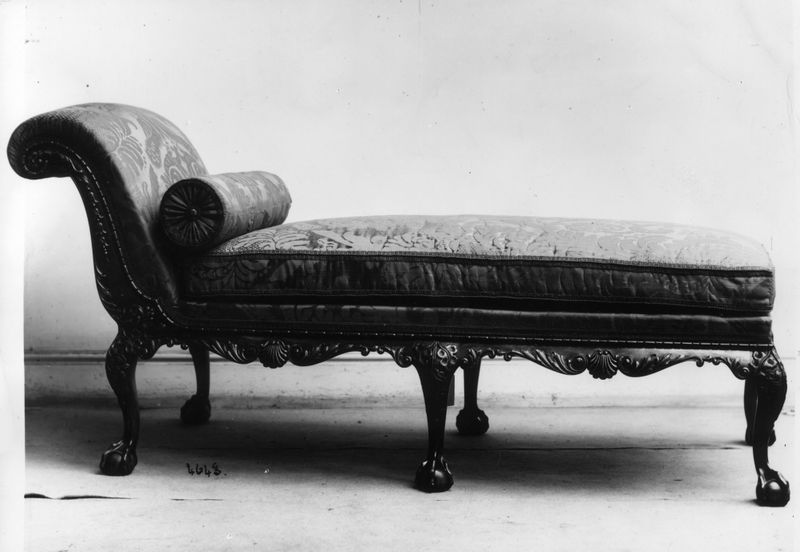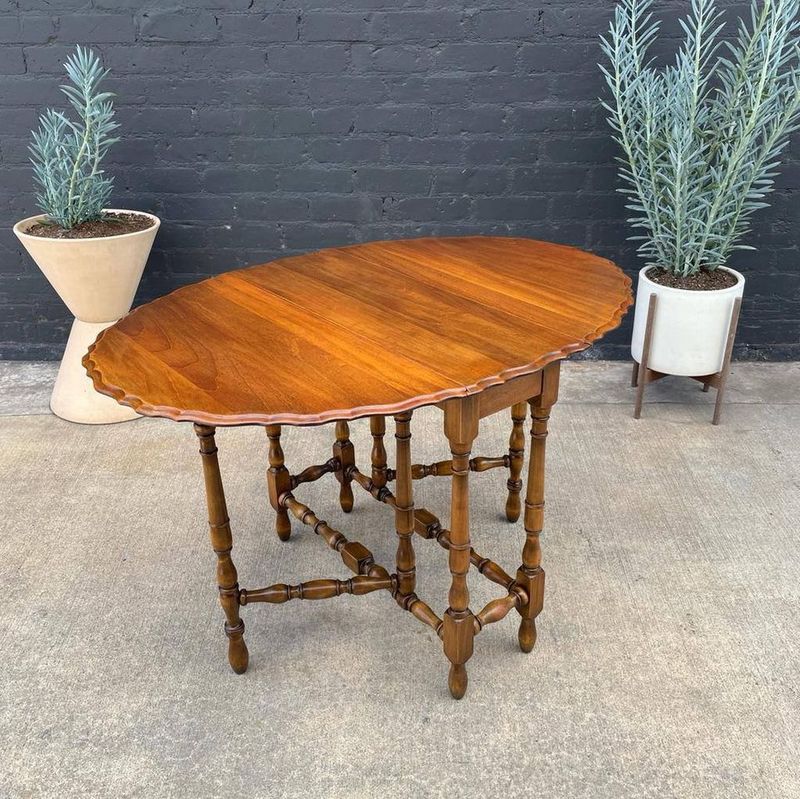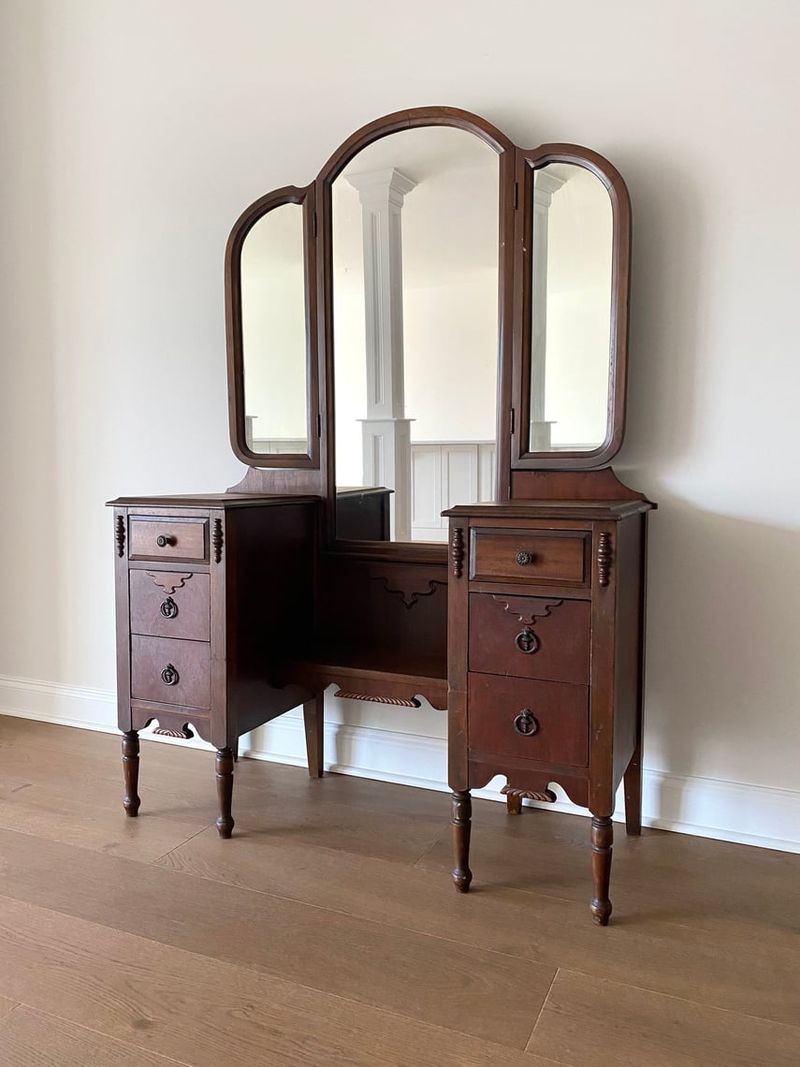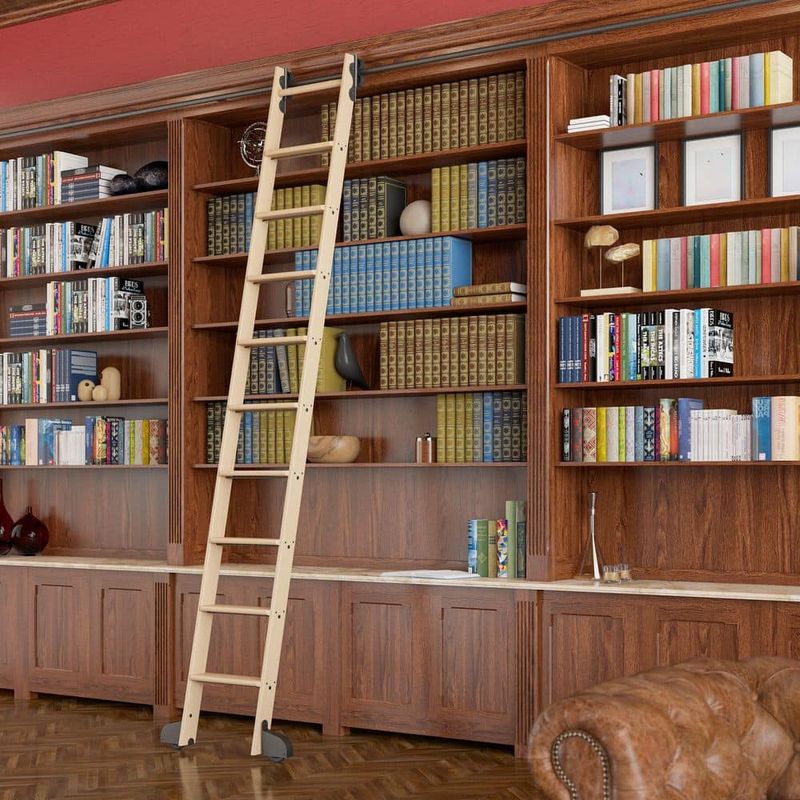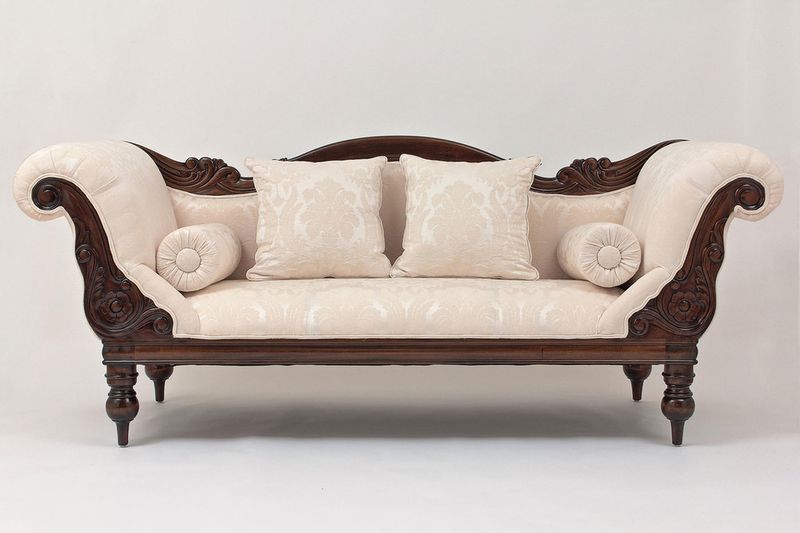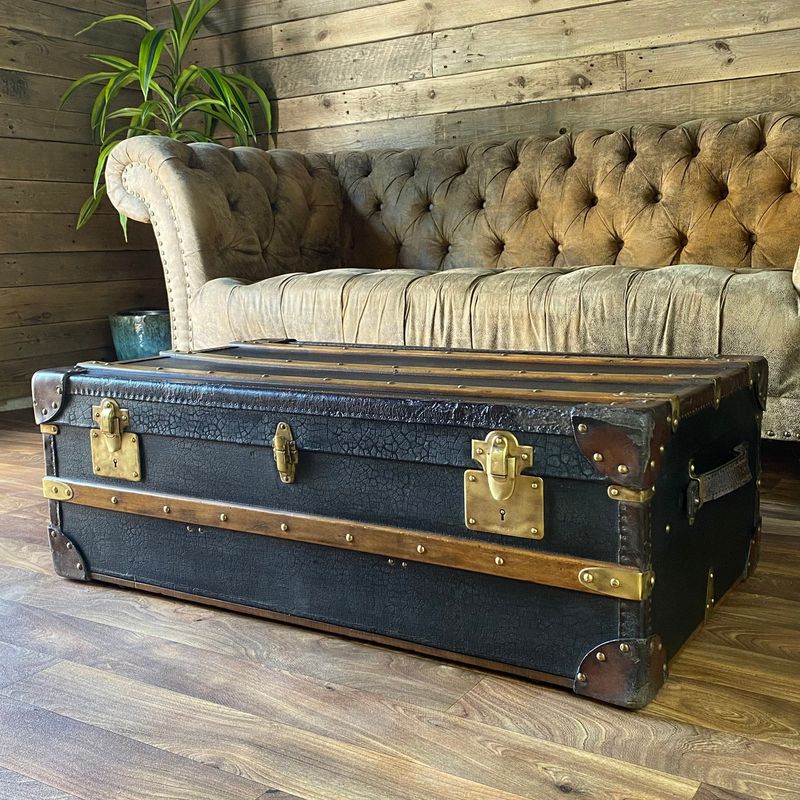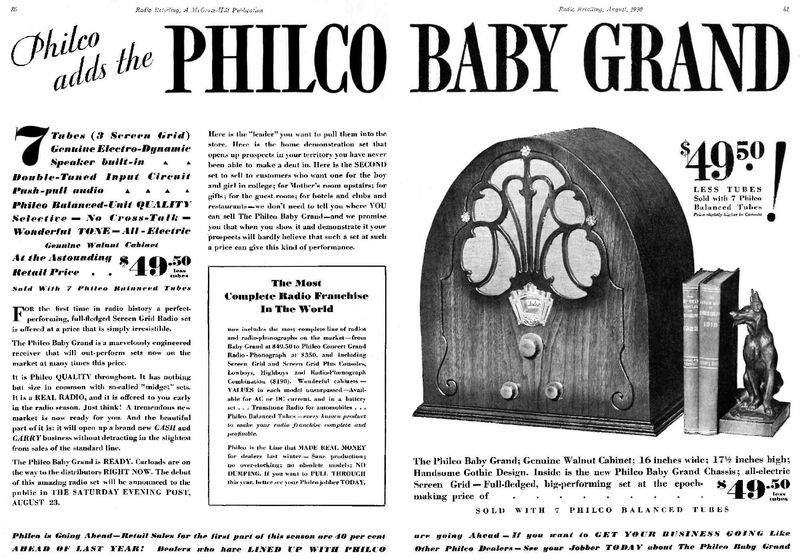Trends come and go, but some pieces of furniture were just too clever, stylish, or downright charming to disappear. These 20 forgotten furnishings once graced homes across the world—and if they made a comeback, we’d welcome them with open arms.
1. Telephone Tables (a.k.a. Gossip Benches)
Remember when conversations were tethered by a cord? Telephone tables, also known as gossip benches, were more than just furniture; they were social hubs. These compact pieces featured a petite seat attached to a side table with a built-in phone shelf. The charm of these tables lies in their simplicity and purpose, providing a dedicated nook for leisurely chats and local gossip. As smartphones dominate our daily lives, the nostalgia for such intimate settings grows stronger.
These tables remind us of a time when conversations were cherished events, not fleeting texts. They evoke a slower pace, inviting us to sit down and connect.
2. Murphy Beds with Built-in Desks
Space-saving marvels, Murphy beds with built-in desks were the epitome of clever design. During the day, they served as tidy workstations, only to morph into comfortable sleeping areas by night. Their versatility made them ideal for small apartments and city living. Imagine the delight of having a full bed and a desk without sacrificing space.
These fold-out wonders reflect an era where maximization was key, offering functionality and comfort in equal measure. With urban living spaces shrinking, the resurgence of such innovative designs would be both practical and stylish, reminding us of the beauty in efficient living.
3. Smoking Cabinets
Once a gentleman’s pride, smoking cabinets were symbols of style and sophistication. These intricately crafted cabinets housed cigars, pipes, and matches, offering a dedicated space for indulgence. The artistry in their woodwork elevated them to near art pieces, admired as much as their contents.
Today, as smoking habits change, these cabinets stand as reminders of a bygone era when smoking was an elaborate ritual. Bringing them back could offer a new twist—imagine using them for modern barware or collectibles, blending history with contemporary tastes in a nod to classic elegance.
4. Pie Safes
In the days before refrigeration, pie safes were kitchen staples. These charming cabinets, with their perforated tin fronts, kept baked goods fresh while allowing air circulation. A staple in many grandmothers’ kitchens, they were both functional and decorative, embodying the rustic charm of country life.
As the world modernized, pie safes faded, but their charm remains. There’s a certain nostalgia in the idea of food storage that doesn’t rely on electricity. In today’s eco-conscious world, reviving such a sustainable and quaint solution might add a touch of traditional elegance to modern homes.
5. Hall Trees
More than a mere coat rack, hall trees were entryway essentials that combined functionality with elegance. Featuring mirrors, umbrella stands, and storage drawers, they were the first welcome for anyone entering a home. Their presence added an air of sophistication and organization.
In an era where homes were reflections of style, hall trees stood out as statements of taste. Reintroducing such pieces today could transform modern entryways, blending utility with classic charm, while reminding us of a time when the entrance to a home was a place of meticulous detail and warm greetings.
6. Step Tansu (Japanese Staircase Cabinets)
Ingenious in design, the step tansu is a marvel of Japanese craftsmanship. These unique pieces served dual roles as both stairs and storage, embodying the minimalist elegance of Japanese interiors. Their modular nature allowed for flexibility and innovation in home design.
Unlike anything found in Western furniture, step tansus were mobile and practical. Their disappearance marks a loss of cultural artistry and utility. Today, they could serve as inspiration for multifunctional furniture, especially in small spaces, reminding us of the beauty in simplicity and the innovation of traditional Japanese design.
7. TV Cabinets with Sliding Doors
When televisions were considered a luxury, TV cabinets with sliding doors were the height of sophistication. These cabinets elegantly concealed screens, transforming living rooms with a simple slide. The craftsmanship of the wood paneling added a touch of class to the burgeoning world of home technology.
As minimalism and hidden tech become trendy, the appeal of such designs resurfaces. Bringing back these cabinets could offer a stylish solution to the clutter of modern electronics, merging nostalgia with contemporary aesthetics, and celebrating the era when furniture and technology were seamlessly integrated.
8. Card Tables with Hidden Drawers
Game nights once hinged on the allure of card tables with hidden drawers. These wooden wonders discreetly stored cards, chips, and drinks, elevating the experience beyond mere gameplay. Their sturdy, elegant design remains unmatched by today’s folding tables.
The craftsmanship offered a sense of occasion, turning every game into a celebrated event. With the revival of communal activities, such tables could reclaim their place in homes, combining nostalgia with modern entertainment. Their return would herald a renaissance of quality and charm in games, where design enhances the joy of shared moments.
9. Secretary Desks
Elegant and compact, secretary desks were the workhorses of early home offices. These fold-down desks offered a writing surface and myriad pigeonholes for letter storage, making organization an art form. In an era where correspondence was key, they provided both function and style.
As digital communication dominates, the allure of such desks lies in their nostalgic charm and practical design. Reviving them could offer a retreat from screens, a dedicated space for reflection and creativity. These desks remind us of a time when writing was an event, and personal space was cherished.
10. Victorian Fainting Couches
In the opulent parlors of the Victorian era, fainting couches were both necessity and luxury. Designed for corseted women to rest, these couches epitomized elegance and indulgence. Their sumptuous upholstery and graceful curves made them statement pieces in any room.
Though their original purpose has faded, the allure of these loungers endures. Reimagined today, they could serve as luxurious additions to modern interiors, offering a touch of historical drama. Fainting couches remind us of an era where leisure was artfully crafted, and comfort was synonymous with style.
11. Music Cabinets
Before digital playlists, music cabinets were treasures in every parlor. These narrow wooden wonders were designed specifically for storing sheet music and records, symbolizing the importance of music in daily life. Their elegance and purpose made them integral parts of home decor.
As music consumption has evolved, these cabinets stand as nostalgic relics. Bringing them back could offer a stylish way to store and display modern music collections, bridging the past with present. Music cabinets remind us of a time when music was a shared, tangible experience, bringing rhythm to the heartbeat of the home.
12. Drop-Leaf Dining Tables
Flexibility and style defined drop-leaf dining tables. These ingenious pieces expanded to accommodate guests and tucked away when space was needed. Their craftsmanship and functional design made them staples in homes where space was a premium.
Today, their appeal lies in their adaptability and classic charm. Reintroducing drop-leaf tables could solve modern space dilemmas while adding a touch of vintage elegance. These tables remind us of an era where dining was a cherished occasion, and furniture was crafted to enhance life’s simple pleasures.
13. Boudoir Vanities with Triple Mirrors
Once the centerpiece of a glamour queen’s chamber, boudoir vanities with triple mirrors were the ultimate in personal luxury. These vanities held perfume, powder, and perfectly applied eyeliner, transforming daily routines into glamorous rituals. The triple mirrors offered a comprehensive view, elevating them above mere furniture.
In today’s fast-paced world, these vanities offer a retreat to glamour and self-care, echoing an age of elegance and personal attention. Reviving them could inspire a renaissance of beauty rituals, where the art of preparation is celebrated. These vanities remind us of a time when beauty was an art form.
14. Ice Boxes (Pre-Refrigerators)
Before electric refrigerators, ice boxes were essential kitchen fixtures. These robust wooden cabinets, lined with metal, kept perishables cool with large blocks of ice. They were both functional and surprisingly elegant, a testament to early 20th-century ingenuity.
With today’s focus on sustainability, ice boxes offer a glimpse into eco-friendly practices of the past. Reviving them could complement modern kitchens with a touch of vintage charm, while promoting thoughtful resource use. Ice boxes remind us of a time when cooling was an art, and innovation met elegance in the heart of the home.
15. Fold-Out Bar Cabinets
What appeared as a humble sideboard could transform into a full cocktail station—fold-out bar cabinets were mid-century marvels. With shelves, mirrors, and tiny drawers, they brought a touch of magic to home entertaining. Their clever design made them favored by hosts who valued style and surprise.
In the resurgence of vintage entertaining, these cabinets could reclaim their place as icons of sophistication. Their return would celebrate the art of hospitality, combining practicality with nostalgic allure, and reminding us of the era when a home bar was a statement of elegance and creativity.
16. Library Ladders on Rails
A symbol of grandeur and utility, library ladders on rails graced private libraries and older homes. These rolling ladders allowed access to towering bookshelves, embodying the majesty of knowledge. Their presence turned libraries into havens of discovery and intellectual pursuit.
As digital media takes precedence, the charm of tangible books and the allure of such ladders endure. Reviving them could enhance home libraries, offering both practicality and a nod to literary elegance. Library ladders remind us of a time when books were treasures, and reaching them was part of the adventure.
17. Settees with Carved Wood Frames
Shorter than a sofa but grander than a chair, settees with carved wood frames were symbols of romantic elegance. These two-seaters graced living rooms with their artistic woodwork and plush comfort, becoming focal points of decor. Their disappearance signals a shift towards modern minimalism.
Reviving settees could bring back a touch of intimate luxury, creating cozy nooks in contemporary spaces. They remind us of a time when furniture was crafted with care, and design was about more than fitting a space—it was about creating a mood, inviting relaxation and conversation.
18. Trunk Coffee Tables
Not just for propping feet, trunk coffee tables were tales of travel and treasure. These repurposed steamer trunks added character to living rooms, serving as both storage and conversation pieces. Their robust design and history make them stand out in today’s uniform furniture landscape.
In an era of mass production, trunk tables offer a unique charm and a sense of adventure. Reviving them could infuse homes with nostalgia and individuality, celebrating the stories held within wooden walls. They remind us of a time when every piece of furniture had a tale to tell, adding depth to daily life.
19. Baby Grand Radio Consoles
Before television, families gathered around baby grand radio consoles for entertainment. These ornate wooden pieces were more than just radios; they were the heart of family rooms, broadcasting stories and music. Their presence was a symbol of connectedness and shared experiences.
As entertainment evolves, the nostalgia for such consoles grows. Reviving them could offer a charming nod to the past, blending vintage aesthetics with modern audio technology. Baby grand radios remind us of a time when sound brought families together, and the art of storytelling was cherished.
20. Conversation Pits
The 1970s introduced conversation pits, where sunken seating created intimate, social spaces. These groovy setups encouraged interaction, making living rooms the epicenter of connection. Their vibrant designs and plush seating defined an era of social revolution, emphasizing communal interaction over solitary lounging.
As open-plan living gains popularity, the concept of conversation pits becomes appealing once more. Reintroducing them could transform modern spaces, blending retro charm with contemporary social dynamics. They remind us of a time when furniture facilitated connection and creativity, inviting people to gather and share.
